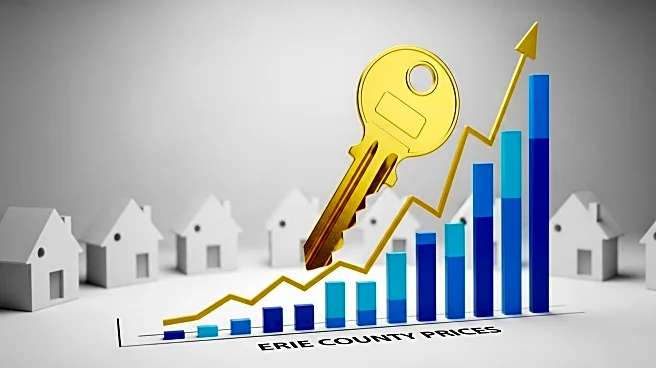What is the story about?
What's Happening?
Recent data from Realtor.com indicates that home sales in Chittenden County, Vermont, experienced a rise in prices during July. The median home sale price increased to $519,950, marking a 2% rise from June's median of $510,000. Compared to July 2024, the median price was up by 1.6%. Single-family homes in Chittenden County saw a decrease in median selling price to $580,000, down 2.9% from the previous month. Across Vermont, the total value of recorded residential home sales rose by 15.3%, from $393.5 million in June to $453.6 million in July. The median sales price of single-family homes across the state increased by 1.3% from June to July, and by 2.4% compared to July 2024. However, the sales price of condominiums and townhomes dropped by 10.1% from June to July.
Why It's Important?
The increase in home sale prices and total sales value in Vermont reflects a robust housing market, which can have significant implications for the state's economy. Higher home prices may benefit sellers and real estate agents, but they could pose challenges for potential buyers, particularly first-time homebuyers. The rise in property values can lead to increased property tax revenues, which may benefit local governments and public services. However, the decrease in sales prices for condominiums and townhomes suggests a potential shift in buyer preferences or market dynamics, which could impact future real estate development and investment strategies in the region.
What's Next?
As the housing market continues to evolve, stakeholders such as real estate developers, local government officials, and potential buyers will need to monitor trends closely. The fluctuations in home prices and sales volumes may influence future housing policies and development plans. Additionally, the market's performance could affect mortgage rates and lending practices, impacting affordability and accessibility for buyers. Real estate professionals may need to adjust their strategies to cater to changing buyer demands and market conditions.
Beyond the Headlines
The dynamics of Vermont's housing market may also reflect broader national trends, such as shifts in population demographics, economic conditions, and consumer preferences. The state's emphasis on outdoor recreation and sustainable tourism could attract new residents, influencing housing demand. Furthermore, the real estate market's performance may have cultural implications, affecting community composition and local economies. Understanding these deeper trends can provide insights into long-term shifts in the housing sector.
AI Generated Content
Do you find this article useful?













